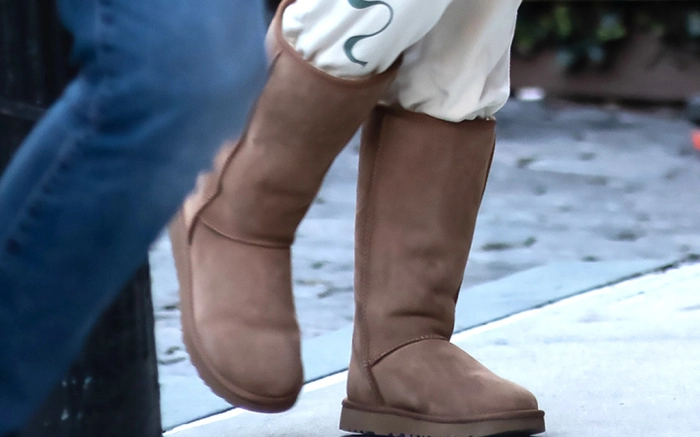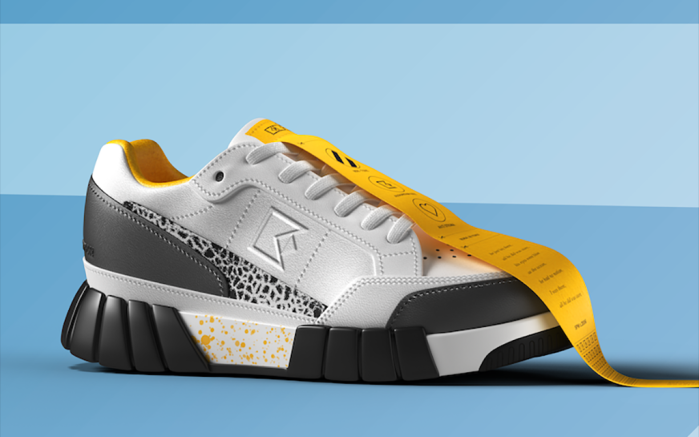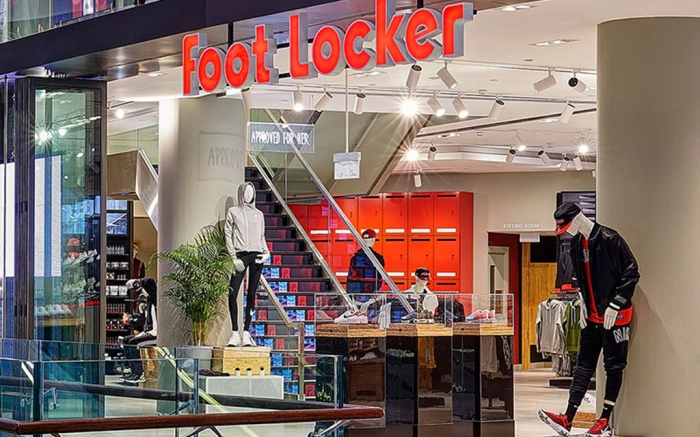How To Choose Sandals For Flat Feet
If you have flat feet, you already know that the wrong pair of shoes can quickly lead to noticeable discomfort. The most comfortable sandals for flat feet should stay supportive all day, letting you breeze through the warmer months without worrying about ankle pain, arch discomfort or foot fatigue.
“As much as we love summer sandals, there are so many types and features that it’s best to choose sandals by foot type as to minimize your chances of experiencing foot pain,” says New York-based podiatrist Dr. Emily Splichal. This is true for any foot type; Dr. Splichal points out that those with high arches should look for extra cushioning, while those with flat feet may need built-in arch supports and “a stiffer, more structured sandal,” she says.
Looking for the best sandals for flat feet? This can be extra complicated because unstructured shoes are more likely to cause discomfort. “The more open the sandal, the less support there will be, especially in the arch, where flat-footed people tend to need it the most,” says fellow New York-based podiatrist Dr. Jacqueline Sutera. That doesn’t mean you need to avoid this shoe style altogether, though. Orthopedic sandals for flat feet should account for your specific foot shape to give you a summery shoe that’s stable enough to function as a daily walking sandal.
In severe cases, surgical correction is possible. But, chances are you won’t need it. “Most people function just fine,” Dr. Sutera says. Flat feet can be temporarily corrected with arch supports, orthotics and supportive shoes. By providing support for your arch, these devices and shoes “correct” your feet while you wear them. Along with arch-strengthening exercises (which Dr. Sutera cautions should only be done with the guidance of an experienced physical therapist), they’re the easiest way to keep flat feet stable and pain-free.

· Structured styles: The daintier the shoe, the less stability it provides for flat feet. “Wearing shoes with more structure and support, especially for people with flat feet, is not only more comfortable but also healthier overall,” Dr. Sutera says. Try to stick to styles that feature straps to help hold your feet in place, similar to hiking sandals or water shoes. Even better if they’re adjustable; these can help your sandals fit better and stay on more securely.
· Thick insoles and outer soles: Thick, cushioned soles are essential for providing adequate support. This is especially true if you have plantar fasciitis, a common overuse injury that often accompanies flat feet and causes inflammation and pain. “People who suffer from plantar fasciitis should avoid styles with thin, flat insoles and outer soles,” Dr. Sutera says.
· Deep heel cups: Not only does this feature help plant your foot more securely in your shoe, it’s also another factor to consider when searching for the best sandals for plantar fasciitis (which tends to be most painful close to the heel). “Deep heel cups can be used as a way to create support for a foot with excess mobility,” Dr. Splichal says. “The heel cup hugs the heel bone, reducing excess motion in the rearfoot and ankle.”
· Enhanced arch support: Enhanced arch support is important for flat feet overall, but especially if they’re accompanied by plantar fasciitis or bunions. Bunions occur when your arch drops, or pronates, causing increased pressure on your foot’s inner area and making the muscles on the top of your foot overcompensate. To avoid this, make sure you’re choosing a style with adequate arch support. “Arch support sandals for flat feet can improve comfort and bring support to a hypermobile, flat or over-pronated foot,” Dr. Splichal says.
· Durability: Durable materials are always a good idea whether you have flat feet or not, but they’re especially important when you need a sturdy sandal to accommodate your foot shape. “Go for high-quality materials that are breathable and stretch naturally with the foot,” Dr. Splichal says. “Avoid materials that may cause blisters or do not stretch.”
· Pronation control: Sandals with inbuilt pronation control can help reduce symptoms of plantar fasciitis and bunions, as well as provide more comfort overall. “Pronation is typically controlled in sandals through arch support, a deep heel seat and heel-toe drop,” Dr. Splichal says. Keep an eye out for all those features to get the most stable sandal. “This is beneficial for those with flat feet or hypermobile feet,” she says.
“As much as we love summer sandals, there are so many types and features that it’s best to choose sandals by foot type as to minimize your chances of experiencing foot pain,” says New York-based podiatrist Dr. Emily Splichal. This is true for any foot type; Dr. Splichal points out that those with high arches should look for extra cushioning, while those with flat feet may need built-in arch supports and “a stiffer, more structured sandal,” she says.
Looking for the best sandals for flat feet? This can be extra complicated because unstructured shoes are more likely to cause discomfort. “The more open the sandal, the less support there will be, especially in the arch, where flat-footed people tend to need it the most,” says fellow New York-based podiatrist Dr. Jacqueline Sutera. That doesn’t mean you need to avoid this shoe style altogether, though. Orthopedic sandals for flat feet should account for your specific foot shape to give you a summery shoe that’s stable enough to function as a daily walking sandal.
How to know if you have flat feet
Not sure if you have flat feet? Check your soles while standing, and look for the absence of a curve in the arch of your foot. “The structure of flat feet is such that the arch tends to flatten too much or overpronate,” Dr. Sutera says. “It can be diagnosed by a doctor, but is usually pretty easy to spot.”In severe cases, surgical correction is possible. But, chances are you won’t need it. “Most people function just fine,” Dr. Sutera says. Flat feet can be temporarily corrected with arch supports, orthotics and supportive shoes. By providing support for your arch, these devices and shoes “correct” your feet while you wear them. Along with arch-strengthening exercises (which Dr. Sutera cautions should only be done with the guidance of an experienced physical therapist), they’re the easiest way to keep flat feet stable and pain-free.
What to look for in the best sandals for flat feet
· Structured styles: The daintier the shoe, the less stability it provides for flat feet. “Wearing shoes with more structure and support, especially for people with flat feet, is not only more comfortable but also healthier overall,” Dr. Sutera says. Try to stick to styles that feature straps to help hold your feet in place, similar to hiking sandals or water shoes. Even better if they’re adjustable; these can help your sandals fit better and stay on more securely.
· Thick insoles and outer soles: Thick, cushioned soles are essential for providing adequate support. This is especially true if you have plantar fasciitis, a common overuse injury that often accompanies flat feet and causes inflammation and pain. “People who suffer from plantar fasciitis should avoid styles with thin, flat insoles and outer soles,” Dr. Sutera says.
· Deep heel cups: Not only does this feature help plant your foot more securely in your shoe, it’s also another factor to consider when searching for the best sandals for plantar fasciitis (which tends to be most painful close to the heel). “Deep heel cups can be used as a way to create support for a foot with excess mobility,” Dr. Splichal says. “The heel cup hugs the heel bone, reducing excess motion in the rearfoot and ankle.”
· Enhanced arch support: Enhanced arch support is important for flat feet overall, but especially if they’re accompanied by plantar fasciitis or bunions. Bunions occur when your arch drops, or pronates, causing increased pressure on your foot’s inner area and making the muscles on the top of your foot overcompensate. To avoid this, make sure you’re choosing a style with adequate arch support. “Arch support sandals for flat feet can improve comfort and bring support to a hypermobile, flat or over-pronated foot,” Dr. Splichal says.
· Durability: Durable materials are always a good idea whether you have flat feet or not, but they’re especially important when you need a sturdy sandal to accommodate your foot shape. “Go for high-quality materials that are breathable and stretch naturally with the foot,” Dr. Splichal says. “Avoid materials that may cause blisters or do not stretch.”
· Pronation control: Sandals with inbuilt pronation control can help reduce symptoms of plantar fasciitis and bunions, as well as provide more comfort overall. “Pronation is typically controlled in sandals through arch support, a deep heel seat and heel-toe drop,” Dr. Splichal says. Keep an eye out for all those features to get the most stable sandal. “This is beneficial for those with flat feet or hypermobile feet,” she says.













